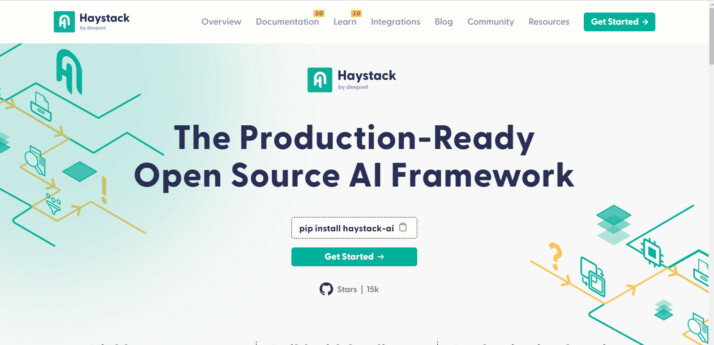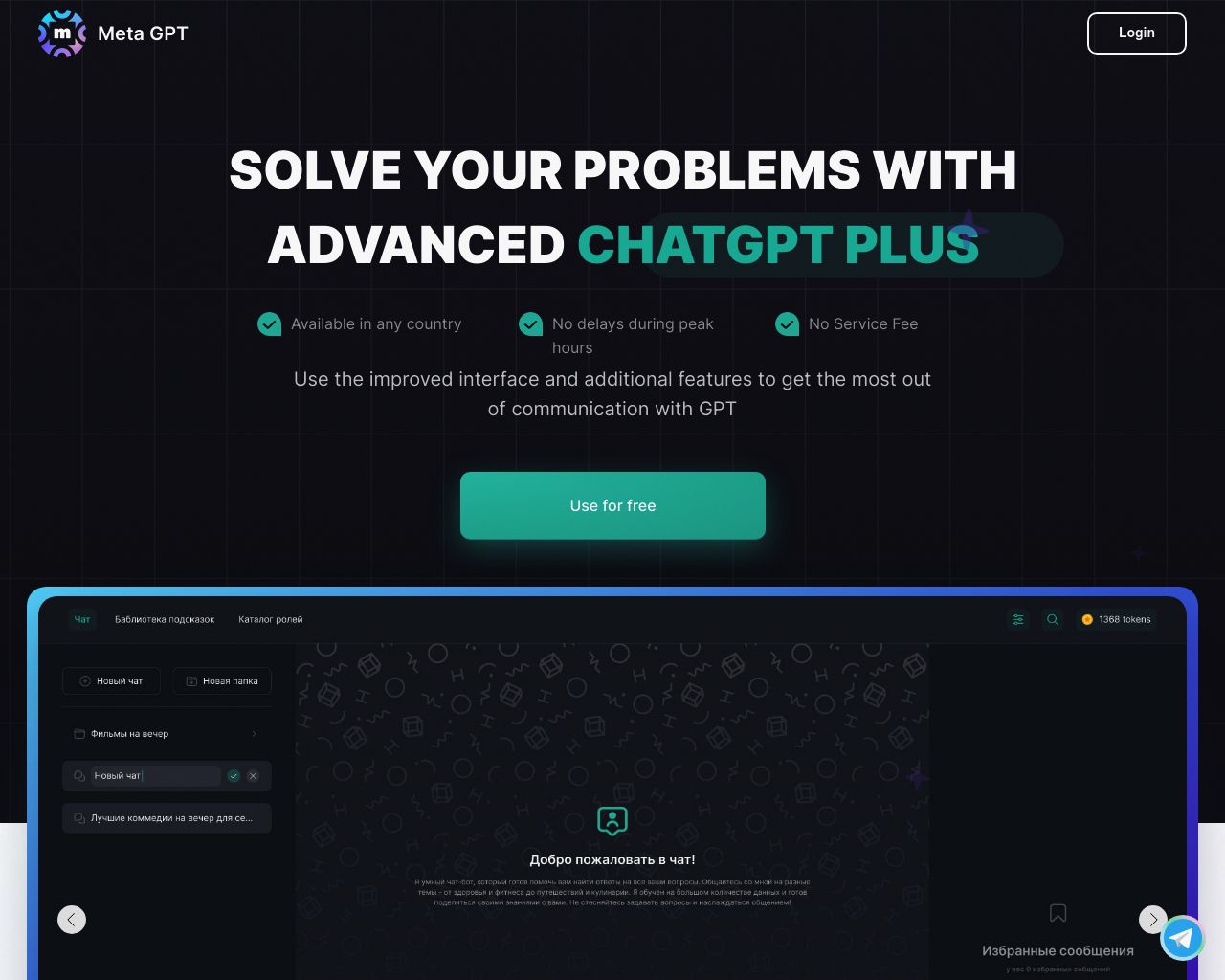Haystack vs. MetaGPT: Comparing AI Development Platforms
AI agent development platforms revolutionize how businesses harness artificial intelligence. Haystack vs. MetaGPT, and SmythOS each offer unique approaches to building AI-powered applications. This comparison explores their core features, development processes, and target use cases. We’ll examine how Haystack’s modular framework tackles retrieval and question-answering tasks, MetaGPT’s multi-agent collaboration simulates software development, and SmythOS provides a comprehensive, user-friendly platform for diverse AI applications. By understanding the strengths and limitations of each tool, developers, business leaders, and AI enthusiasts can make informed decisions about which platform best suits their specific needs and technical expertise.
Haystack Overview
Haystack provides an open-source framework for building AI-powered applications using large language models and vector search. Developers use Haystack to create production-ready solutions for tasks like question answering, document search, and conversational AI. The platform excels at retrieval-augmented generation, allowing AI systems to leverage external knowledge for more accurate and contextual responses.
At its core, Haystack offers modular components that developers can combine into customized pipelines. These pipelines orchestrate the flow of data through various AI models and retrieval systems. Haystack integrates seamlessly with popular tools like Hugging Face Transformers, Elasticsearch, and OpenAI, giving developers flexibility in model selection and deployment options.


Haystack shines in its ability to handle complex queries across large datasets. The framework supports multimodal retrieval, allowing AI agents to work with text, tables, and other content types.
Haystack shines in its ability to handle complex queries across large datasets. The framework supports multimodal retrieval, allowing AI agents to work with text, tables, and other content types. For enterprise users, deepset Cloud provides a managed solution for the entire lifecycle of NLP application development — from prototyping to production deployment and monitoring.
While Haystack offers powerful capabilities, it requires coding knowledge to fully leverage. The lack of a visual builder or no-code editor may present a steeper learning curve for non-technical users. However, for teams with development resources, Haystack’s extensive customization options and integration possibilities make it a versatile choice for building sophisticated AI applications.
Haystack positions itself as a comprehensive framework for AI-driven search and question answering. Its strengths lie in its modular architecture, support for cutting-edge language models, and ability to handle large-scale document processing. For organizations looking to build robust, production-ready NLP solutions, Haystack provides the tools and flexibility to tackle complex information retrieval and generation tasks.
MetaGPT Overview
MetaGPT revolutionizes multi-agent collaboration by combining human Standardized Operating Procedures (SOPs) with advanced Large Language Models (LLMs). This open-source framework, developed by researchers from prestigious institutions, simulates a software company’s structure to tackle complex tasks.


MetaGPT assigns distinct roles to AI agents, mirroring positions like product managers, architects, and engineers. This structure enables efficient collaboration on software development projects. The framework uses SOPs to encode human workflows into prompt sequences, enhancing output consistency and reliability.
MetaGPT assigns distinct roles to AI agents, mirroring positions like product managers, architects, and engineers. This structure enables efficient collaboration on software development projects.
The platform’s core philosophy, “Code = SOP(Team),” integrates established human practices into AI-driven processes. By breaking tasks into manageable subtasks handled by specialized agents, MetaGPT produces coherent, high-quality code while minimizing errors common in multi-agent systems.
MetaGPT generates comprehensive documentation throughout the development process, including requirement documents, design artifacts, and interface specifications. These intermediate outputs boost the final code’s success rate and facilitate better human-AI interaction.
While MetaGPT excels in simulating software development processes, it lacks some features found in more comprehensive AI agent builders. The platform doesn’t offer a visual builder or no-code editor, potentially limiting accessibility for non-technical users. Additionally, MetaGPT’s focus on software development may not fully address needs in other domains without additional customization.
Feature Comparison
Haystack and MetaGPT offer distinct approaches to AI agent development, each with its own strengths and limitations. Haystack excels in retrieval-augmented generation and document processing, providing a robust framework for building search and question-answering applications. Its modular architecture allows for extensive customization and integration with various AI models and tools. However, Haystack lacks a visual builder or no-code editor, potentially limiting accessibility for non-technical users.
MetaGPT, on the other hand, focuses on simulating software development processes using AI agents in predefined roles. This unique approach enables complex task decomposition and collaborative problem-solving among AI agents. MetaGPT generates comprehensive documentation throughout the development process, enhancing transparency and facilitating human-AI interaction. However, like Haystack, MetaGPT does not offer a visual builder or no-code options, which may present challenges for users without programming expertise.
We offer a more comprehensive solution with our visual builder and no-code editor, making AI agent development accessible to a wider range of users. Our platform also provides advanced features like constrained alignment and IP control, which are not explicitly mentioned in Haystack or MetaGPT’s documentation. Additionally, we support a broader range of deployment options and integration capabilities, including Zapier APIs and scheduled agent deployment, offering greater flexibility and scalability for diverse use cases.
Feature Comparison Table
| Haystack | MetaGPT | SmythOS | |
|---|---|---|---|
| CORE FEATURES | |||
| Visual Builder | ❌ | ❌ | ✅ |
| No-Code Options | ❌ | ❌ | ✅ |
| Agent Work Scheduler | ❌ | ✅ | ✅ |
| SECURITY | |||
| Constrained Alignment | ❌ | ✅ | ✅ |
| IP Control | ❌ | ❌ | ✅ |
| COMPONENTS | |||
| Zapier APIs | ❌ | ✅ | ✅ |
| Data Lakes | ❌ | ❌ | ✅ |
| DEPLOYMENT OPTIONS (EMBODIMENTS) | |||
| Staging Domains | ❌ | ❌ | ✅ |
| Production Domains | ❌ | ✅ | ✅ |
| Deploy as Scheduled Agent | ❌ | ✅ | ✅ |
| DATA LAKE SUPPORT | |||
| Hosted Vector Database | ✅ | ❌ | ✅ |
| Sitemap Crawler | ❌ | ❌ | ✅ |
| YouTube Transcript Crawler | ❌ | ❌ | ✅ |
Best Alternative to Haystack and MetaGPT
SmythOS revolutionizes AI agent development with a comprehensive platform that surpasses both Haystack and MetaGPT. Our intuitive drag-and-drop interface empowers users to create sophisticated AI agents without extensive coding knowledge, making advanced AI capabilities accessible to a broader audience.
SmythOS revolutionizes AI agent development with a comprehensive platform that surpasses both Haystack and MetaGPT.
SmythOS offers unparalleled flexibility with support for multiple AI models and pre-built API integrations. Users can effortlessly design complex workflows connecting various data sources, APIs, and AI models. This versatility enables rapid development and deployment of AI solutions across diverse use cases, from chatbots to automated data analysis.
Our platform excels in scalability and security, crucial factors for enterprise-level implementations. SmythOS provides robust features like constrained alignment and IP control, ensuring AI agents operate within defined parameters and maintain data integrity. The platform’s extensive deployment options, including APIs, webhooks, and scheduled agents, offer seamless integration into existing systems and workflows.
SmythOS stands out with its advanced collaborative features and comprehensive analytics tools. The multi-agent orchestration capability allows teams of AI agents to work together on complex tasks, significantly enhancing efficiency and problem-solving capabilities. With real-time monitoring and detailed audit logs, users gain valuable insights into agent performance and behavior, facilitating continuous improvement and optimization.
SmythOS stands out with its advanced collaborative features and comprehensive analytics tools.
By combining user-friendly design, powerful AI capabilities, and enterprise-grade features, SmythOS emerges as the superior choice for organizations seeking to harness the full potential of AI technology. Our platform not only addresses the limitations of Haystack and MetaGPT but also provides a future-proof solution for evolving AI needs.
Conclusion
Haystack and MetaGPT offer powerful tools for AI development, each with unique strengths. Haystack excels in retrieval-augmented generation and modular architecture, while MetaGPT simulates software development processes with specialized AI agents. However, both platforms lack visual builders and no-code options, potentially limiting accessibility.
SmythOS emerges as a superior alternative, combining the strengths of both while addressing their limitations. Our platform’s visual builder and no-code editor democratize AI agent development, making it accessible to technical and non-technical users alike. We offer advanced features like constrained alignment and IP control, ensuring security and performance.
Our platform’s versatility shines through its extensive deployment options and integrations. From APIs to chatbots, scheduled agents to GPT deployments, SmythOS adapts to diverse use cases. With support for over 300,000 integrations, including Zapier APIs, we empower users to create sophisticated AI workflows effortlessly.
Experience the future of AI development with SmythOS. Explore our diverse range of AI-powered agent templates to jumpstart your projects, or create a free account to build unlimited AI agents at no cost. Unleash the full potential of AI for your business – try SmythOS today and revolutionize your approach to intelligent automation.
Last updated:
Disclaimer: The information presented in this article is for general informational purposes only and is provided as is. While we strive to keep the content up-to-date and accurate, we make no representations or warranties of any kind, express or implied, about the completeness, accuracy, reliability, suitability, or availability of the information contained in this article.
Any reliance you place on such information is strictly at your own risk. We reserve the right to make additions, deletions, or modifications to the contents of this article at any time without prior notice.
In no event will we be liable for any loss or damage including without limitation, indirect or consequential loss or damage, or any loss or damage whatsoever arising from loss of data, profits, or any other loss not specified herein arising out of, or in connection with, the use of this article.
Despite our best efforts, this article may contain oversights, errors, or omissions. If you notice any inaccuracies or have concerns about the content, please report them through our content feedback form. Your input helps us maintain the quality and reliability of our information.
